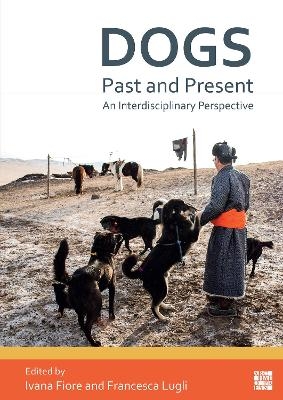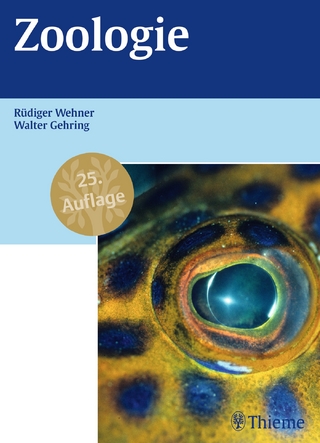
Dogs, Past and Present
Archaeopress Archaeology (Verlag)
978-1-80327-354-9 (ISBN)
Dogs, Past and Present: An Interdisciplinary Perspective gathers contributions from scholars from a variety of disciplines to provide a comprehensive assessment of the importance of dogs through history. Over the last decades, countless studies have examined the lives of dogs and their current place in our societies as well as their crucial part in human life and history. Data and hypotheses have progressively increased, sometimes controversially, in each field of investigation. The domestication of dogs and its success during prehistory is a fascinating theme that scholars of various disciplines are involved with. However, there has not been a real exchange between those approaches and it is extremely complex to reach a complete view of the thousands of texts which are published every year. By contrast, this volume is entirely dedicated to dogs and it is focused on the necessity of an ‘interdisciplinary perspective’ to fully understand the fundamental role that dogs have played in our past. When, where, how and why were dogs domesticated? What is their story? What was their role in the history of humankind? What is their role in traditional and non-traditional societies today? The book originated from the conference ‘Dogs, Past and Present – an Interdisciplinary Perspective’ held at CNR (National Scientific Council) and at Sapienza University in Rome (14–17 November 2018), promoted by the Italian Association for Ethnoarchaeology and organised by the editors.
Ivana Fiore is currently enrolled in the Doctoral Program in Environmental and Evolutionary Biology (Sapienza University of Rome), where her research focuses on zooarchaeology and taphonomy. In her work, she collaborates with the Bioarchaeology Service at the Museum of Civilisations and with Parco Archeologico – Ostia antica, in Rome. She has both organised and presented at national and international conferences, authored scientific papers and edited colloquium proceedings. She has taught zooarchaeology at Sapienza University of Rome and at the University of Cagliari, Scuola di Specializzazione in Beni Archeologici. Francesca Lugli is the president of the Italian Association for Ethnoarchaeology. Currently, she is leading ethnoarchaeological investigations in Portugal, Mongolia and the Russian Federation supported by the Ministry of Foreign Affairs and International Cooperation – Italy MFA and ISMEO. She has both organised and presented at national and international conferences, authored scientific papers and edited colloquium proceedings. Her research focuses on modern nomads, their campsites, their land use strategies, their intangible heritage and also on the relationships between humans and dogs in different cultural and geographical contexts.
Presentation – Adriano V. Rossi
Forewords – Alberto Cazzella, Simon JM Davis, Dulam Sendenjav
Introduction – Ivana Fiore and Francesca Lugli
Calling on a Favour from Human’s Best Friend: Public Outreach in Science – David Ian Howe
Section 1. Dog Genetics, Microtomography and Morphometric Techniques
1.1 A Molecular View on the Domestication of Dogs – Carles Vilà and Jennifer A. Leonard
1.2 Mitochondrial DNA Variation among Dogs of Mongolian, Tuvinian and Altaic Nomads – Daria Sanna, Ilenia Azzena, Piero Cossu, Fabio Scarpa, Massimo Scandura, Marco Apollonio, Francesca Lugli, Paolo Francalacci, Paolo Mereu, and Marco Casu
1.3 Ancient and Recent Changes in Breeding Practices for Dogs – Grégoire Leroy, Shi-Zhi Wang, Tom Lewis, and Sophie Licari
1.4 Using X-ray Microtomography to Discriminate Between Dogs’ and Wolves’ Lower Carnassial Tooth – Francesco Boschin, Federico Bernardini, Clément Zanolli, Antonio Tagliacozzo, and Claudio Tuniz
1.5 The Skull Shape of Canis lupus. A Study of Wolf and Dog Cranial Morphology – Raquel Blázquez-Orta, Laura Rodríguez, María Ángeles Galindo-Pellicena, Ignacio De Gaspar, and Nuria García
Section 2. Wolf Versus Dog
2.1 Size Variation of the Middle-Late Pleistocene Grey Wolf (Canis lupus) from the Italian Peninsula – Dawid Adam Iurino, Beniamino Mecozzi, Davide Persico, Lucia Maimone, and Raffaele Sardella
2.2 The Advantages of Owning a Palaeolithic Dog – Mietje Germonpré, Martina Lázničková-Galetová, Mikhail V. Sablin, and Hervé Bocherens
2.3 Why Wolves Became Dogs: Interdisciplinary Questions on Domestication – Juliane Bräuer and Blanca Vidal Orga
2.4 Vector-Borne Diseases as Possible Constraints on the Spread of Dogs into the Tropics and Beyond – Peter Mitchell
Section 3. Dogs through Time: Role, Task and Position
3.1 Urban Nomads and their Dogs – Christophe Blanchard
3.2 ‘The Mayor is a Dog’: The Coming of Age of Contemporary American Pet Culture – Simona Bealcovschi
3.3 Wolves, Dogs and Water – Dogs and Fishing Boats – Francesca Lugli
3.4 Dogs, Nomads and Hunters in Southern Siberia – Francesca Lugli and Galina B. Sychenko
3.5 The Dog – Human Interrelations in the Lower Amur Rural Regions (the Far East of Russia): Past and Present – Olga V. Maltseva
3.6 The Mother of Dogs: Women, Power and Dogs in First Nations Societies in Northwest North America – Lanoue
3.7 Dogs through Time: An Ethno-Evolutionary Perspective – Tiziano Latini, Luca Pandolfi, and Saverio Bartolini Lucenti
3.8 Dogs and the Afterlife in Southern Italy between Ethnology and Archaeology – Claudio Giardino and Tiziana Zappatore
3.9 Faithful unto Death. Burial, Legends and Heroism of the Dog from Antiquity to the Contemporary Age – Jacopo De Grossi Mazzorin (†), Ivana Fiore, Claudia Minniti, and Antonio Tagliacozzo
Section 4. Dogs: Archaeological and Archaeozoological Cases
4.1 Ur-gir and the Other Dogs from Abu Tberah (Southern Iraq): Considerations on the Role of Dogs in Sumer during the 3rd Millennium BCE – Francesca Alhaique, Licia Romano, and Franco D’Agostino
4.2 Ritual Use of Dogs in the Neolithic Cultures of China – Maria Kudinova
4.3 Neolithic Dogs in the Central Po Valley - A Review of Published Data and New Evidence – Fabio Bona, Daniela Castagna, and Raffaella Poggiani Keller
4.4 Evolution and Utilisation of Dogs in Austria: The Archaeozoological Record from the Neolithic to the Roman Period – Konstantina Saliari, Erich Pucher, and Martin Mosser
4.5 A Dog’s Head in a House Pit at the Early Iron Age Site of Verucchio. Butchery Waste or Ritual Sacrifice? – Marco Bertolini and Ursula Thun Hohenstein
4.6 The Dogs from the Cult Layers of the Ipogeo del Guardiano (Trinitapoli, Barletta-Andria-Trani, Italy) – Martina Di Matteo, Anna Maria Tunzi, Rachele Modesto, and Francesca Alhaique
4.7 Four Dogs in the Road and Other Canine Oddities from Gabii (Rome, Italy) – Francesca Alhaique
4.8 The Discovery of a Dog in the Excavations of the Rome Underground Line C in Largo Amba Aradam – Simona Morretta, Giovanni Ricci, and Francesca Santini (†)
4.9 Dog and Human Sepultures at Peltuinum (L’Aquila, Italy) – Ivana Fiore, Luisa Migliorati, Antonella Pansini, Tiziana Sgrulloni, and Alessandra Sperduti
4.10 The Dog as a Companion in Life and Death: The Case Study of Dog Burials in a Human Grave
(VII - VI BC) Loc. Collina dei Gelsi - Poggio Sommavilla (RI) – Francesca Santini (†)
4.11 The Role of Dogs in the Xiongnu Society – Evgeniy S. Bogdanov
4.12 Dog Burial at the Ust-Voikarskoe-1 Settlement and its Interpretation Issues – Andrey V. Novikov and Yuri N. Garkusha
4.13 The Dog in the Castle: A Dog Skeleton from the Castle of Santa Severa (Latium, Italy) – Eugenio Cerilli and Marco Fatucci
Section 5. Representation of Dogs in Different Cultures
5.1 Lupus in Fabula: The Representation of the Wolf (Canis lupus) in European Palaeolithic Art – Gianpiero Di Maida, Margherita Mussi, Alberto Lombo Montañés, and Manuel Bea
5.2 At the Beginning of a Beautiful Friendship. Canid Representations in Levantine Rock Art – Manuel Bea, Alberto Lombo, Gianpiero Di Maida, and Margherita Mussi
5.3 Dog Images in the Altai Rock Art – Dmitry V. Cheremisin
5.4 Representations of Dogs in Attic Funerary Monuments: A Question of Symbolism? – Francesco Tanganelli
5.5 ‘Do Not Laugh, I Beg of You, for This Is a Dog’s Grave’: The Human-Canine Bond in the Ancient Greek World – Liubov Eliseeva and Eugenia Andreeva
5.6 The Image of the Dog on Ancient Coins in the Mediterranean Area – Alessandra Bottari
5.7 The Numismatist’s Best Friend. Images of Dogs on Roman Coins – Alessandro Crispino
5.8 Dogs in Early Imperial China: Anthropo-Zoological Reading of Iconographic Sources from the Han Dynasty (206 BC-AD 220) – Frédéric Devienne
5.9 ‘Cobalt Greyhounds’. An Artistic Proof in Ceramics – Silvia Nutini and Marino Marini
Section 6. Dogs: Myth and Symbolism
6.1 ‘Implore Me Not, Dog’. The Dog in the Classical World: An Apotropaic View – Marco Giuman and Miriam Napolitano
6.2 Dogs in Phoenician Culture – Giuseppe Minunno
6.3 Dog in War, Hunting, Livestock Work and Everyday Life of Greco-Roman Society – Ana Portillo Gómez
6.4 Dog in Philippine Life, Ritual and Creation Myths: In a Spirit of Hunting – Maria V. Stanyukovich
6.5 Demonic Dogs of Mongolian Stag Stones and their Chinese Counterparts – Andrey V. Varenov
6.6 A Few Days with Mongolian Dogs and their Herders – Graziano Capitini and Francesca Lugli
6.7 Dog and Wolf in the Non-Tale Prose of the Turkic Peoples of Siberia – Galina B. Sychenko
| Erscheinungsdatum | 02.09.2023 |
|---|---|
| Zusatzinfo | 218 figures, 38 tables (colour throughout) |
| Verlagsort | Oxford |
| Sprache | englisch |
| Maße | 205 x 290 mm |
| Gewicht | 1768 g |
| Themenwelt | Geisteswissenschaften ► Archäologie |
| Naturwissenschaften ► Biologie ► Zoologie | |
| Weitere Fachgebiete ► Land- / Forstwirtschaft / Fischerei | |
| ISBN-10 | 1-80327-354-2 / 1803273542 |
| ISBN-13 | 978-1-80327-354-9 / 9781803273549 |
| Zustand | Neuware |
| Informationen gemäß Produktsicherheitsverordnung (GPSR) | |
| Haben Sie eine Frage zum Produkt? |
aus dem Bereich


